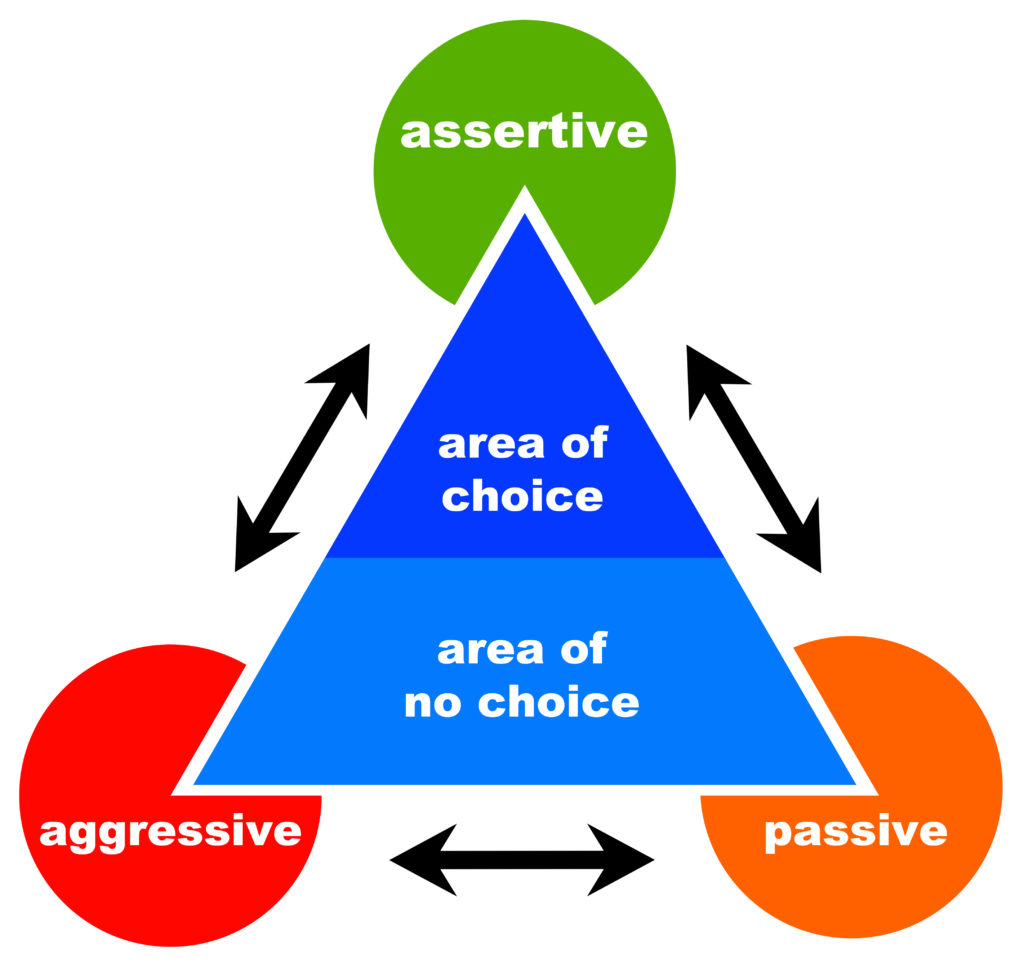The three main communications styles each have specific characteristics but also share some overlap. Very few, if any, people move through their entire lives exclusively using one style or another. As mentioned before, effective communications depend on the relationship between the Speaker, the Audience and the Message. Sometimes one communications strategy is better than others, depending on the setting.

Aggressive Style
The aggressive communicator speaks forcefully and directly, often getting their point across using few words. The aggressive style is aptly named as it often includes behavior that puts others down, ascribes blame, condescends and embraces feelings of anger, hostility and impatience. While this style forces compliance, aggressive communication often provokes counter-aggression, alienation, resistance, sabotage and lying. Reliance on this sole style of communicating tends to result in a lack of choices available for group consensus.
Passive Style
The passive style is the opposite of the aggressive style. This style is indirect, hesitant and agreeable. Passive communicators have the ability to listen well to what others have to say. However, passive style users tend to build dependent relationships, and Speakers may lose self-esteem as they promote other causes over their own. Reliance on this sole style of communicating tends to limit choices available for group consensus.
Assertive Style
The assertive style is a halfway point between the two previous styles. Assertiveness does not always translate to success, but those being assertive evaluate many sides and beliefs to reach a collaborative solution. By expressing limits and expectations openly and honestly, assertive Speakers increase the self-esteem of all those working around them including themselves. Integration of an assertive communication style leads to a non-judgmental flow of ideas and Messages for negotiation and compromise.
A Place and a Time for Each Style
Although the assertive style is valuable for a productive and inclusive leader, each of these styles has a place and a time. For example, aggressive communicators are sometimes described as ‘knowing what they want’ with an ability to push through adversity. Aggressive communications help make a decision in a short amount of time, such as during emergencies, and when there is a single clear solution. You could imagine a number of situations in the petroleum industry, e.g., abnormally high pressures encountered while drilling a well, where the safety of all personnel requires a more aggressive communication style from a clear Speaker.
Conversely, passive communications work well when an issue is minor, when emotions are running high and parties may benefit from cooling the conversation, or when the power disparity between the two parties is too large for assertiveness to make a difference. Passive communicators are often described as ‘friendly’ and ‘concerned about others’. A tense office situation between co-workers can often be diffused by a colleague whose communication style helps alleviate short-term anxiety.
Images: “Communication” by Mike McKay licensed under CC BY NC ND 2.0 ; “Assertive-aggressive-passive-triangle” by desdemona72 via Shutterstock


